The Christmas season is starting and why not bake the king of this gorgeous holiday season? This buttery and fluffy Italian Christmas cake encloses all the flavor of this magic feast, it has candid oranges, sultana raisins soaked with Rum, and gorgeous white chocolate icing.
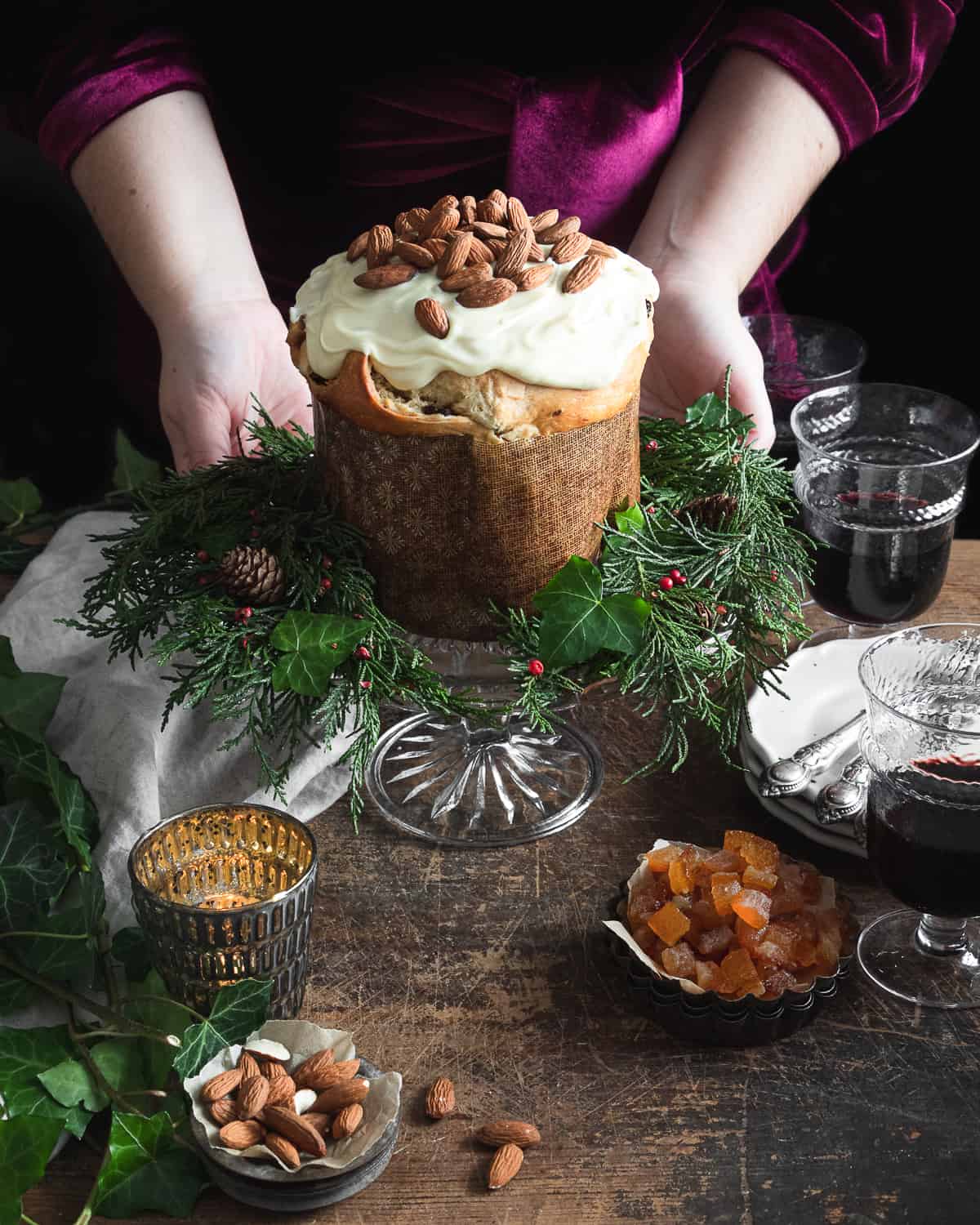
Moreover, if you are looking to recreate a gorgeous festive desserts table why not try one of my favorite Italian flourless chocolate cakes, or this divine Pumpkin cake with salted cream cheese frosting, or this superb coffee and hazelnut mascarpone cake. Why not bake them all, it will be a wonderful surprise for your guests and kids to see all these desserts on the table.
This Panettone recipe is super easy, you will just need to follow my steps and some useful tips that I have learned during the years and in just one day of work, you'll have a super fluffy Italian Christmas cake that will leave your guests astonished. Believe me, they will not notice the difference in taste and texture from the sourdough Panettone.
Why you'll love it
- Easy to make
- Super fluffy and buttery texture
- Packed with Christmas flavors
- Perfect festive dessert
EQUIPMENT NEEDED TO MAKE THE ITALIAN CHRISTMAS CAKE
These are the tools you will need to make Italian Christmas bread.
- Panettone cases- used to hold the dough during the leavening and cooking. For the amount of dough in this recipe, you can use cases for a 1 kg panettone. Or simply divide the dough into two and use two 500g cases.
- Panettone skewers- used to hang the panettone upside down, just after it is been out from the oven. It is important not to skip this process as this technique allows you to keep the crumb soft and prevent the dome from falling down. If you can't find the Panettone skewer, use long knitting needles or long wooden skewers. In case you are using the wooden skewers, I advise you to insert them just before placing the shaped dough.
- Stand mixer- a stand mixer is necessary for this work, it needs to develop the gluten to get an elastic and smooth dough. This is the key to a good rising dough. I would not suggest doing it by hand as it will be impossible to develop gluten.
- Digital scale- I strongly recommend using digital scales for a more accurate result.
INGREDIENTS NEEDED
This Italian Christmas bread has just a few ingredients and the quality of these is essential to achieve a Panettone that tastes divine. So, I advise you buy the best ingredients you can find. Here is what you need:
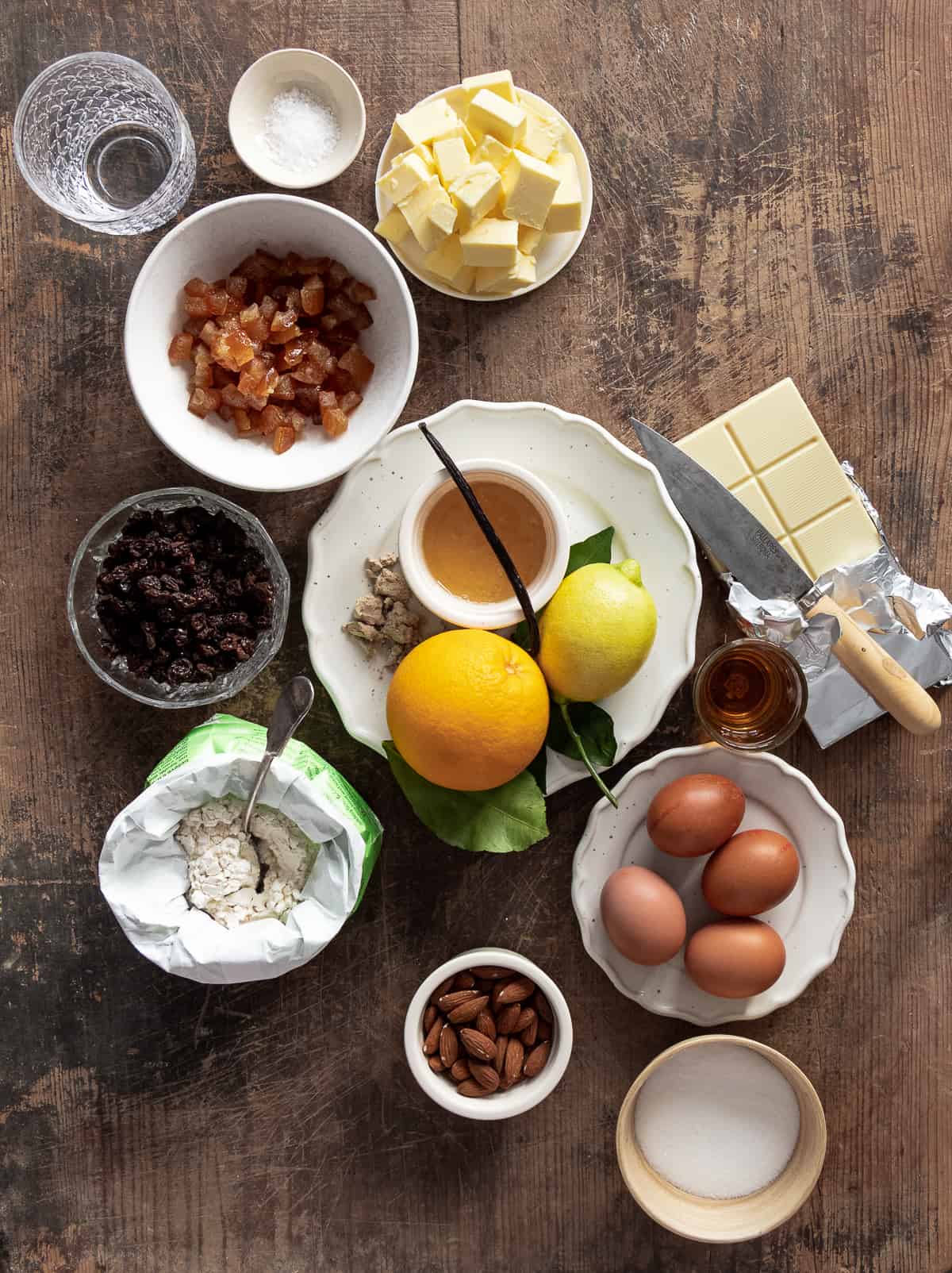
Starter and dough
- Flour- use strong bread flour with 15% of protein or Canadian flour. This will help to develop the gluten in the dough and to rise properly, as it is quite heavy thanks to the presence of butter and eggs.
- Water- use for creating the starter, also in the dough. Use room temperature water.
- Yeast- used to create a starter with water and flour. It is left to ferment and then mixed with the rest of the ingredients. The yeast should be fresh, you can find it in the bakery counter of the supermarket.
- Yolks- use room temperature organic eggs or free-range ones. They provide structure, richness, and color to the dough.
- Sugar- needs to be caster sugar as it dissolves better into the dough. No icing sugar or powdered sugar.
- Salt- enhances the flavors.
- Butter- use good quality unsalted butter, I have used Lurpark. The butter needs to be softened, I recommend leaving it at room temperature of the day you are making the starter.
Flavour
- Sultana raisins- needs to be washed under cold water and hydrated for a few hours. Then it should be drained, squeezed, and leave it on a baking sheet, and covered with a clean cloth until needed.
- Rum- use it to hydrate the Sultana raisins in combo with the water. It will give a nice sugary flavor to the Suntana raisins that work gorgeously with the Panettone.
- Candied oranges- use the best quality you can find in your town. The candied oranges together with the Sultana raisins given to the panettone crumbs the right amount of humidity. In case you want to use different flavors I suggest you keep at least one of them for this reason.
- Mix aromatic- made from a mix of honey, grated zest of unwaxed orange, and of unwaxed lemon and the seeds of one vanilla pod. I recommend making it the day before as it will release all the flavors during the resting time. This will provide an amazing citrus taste to the dough.
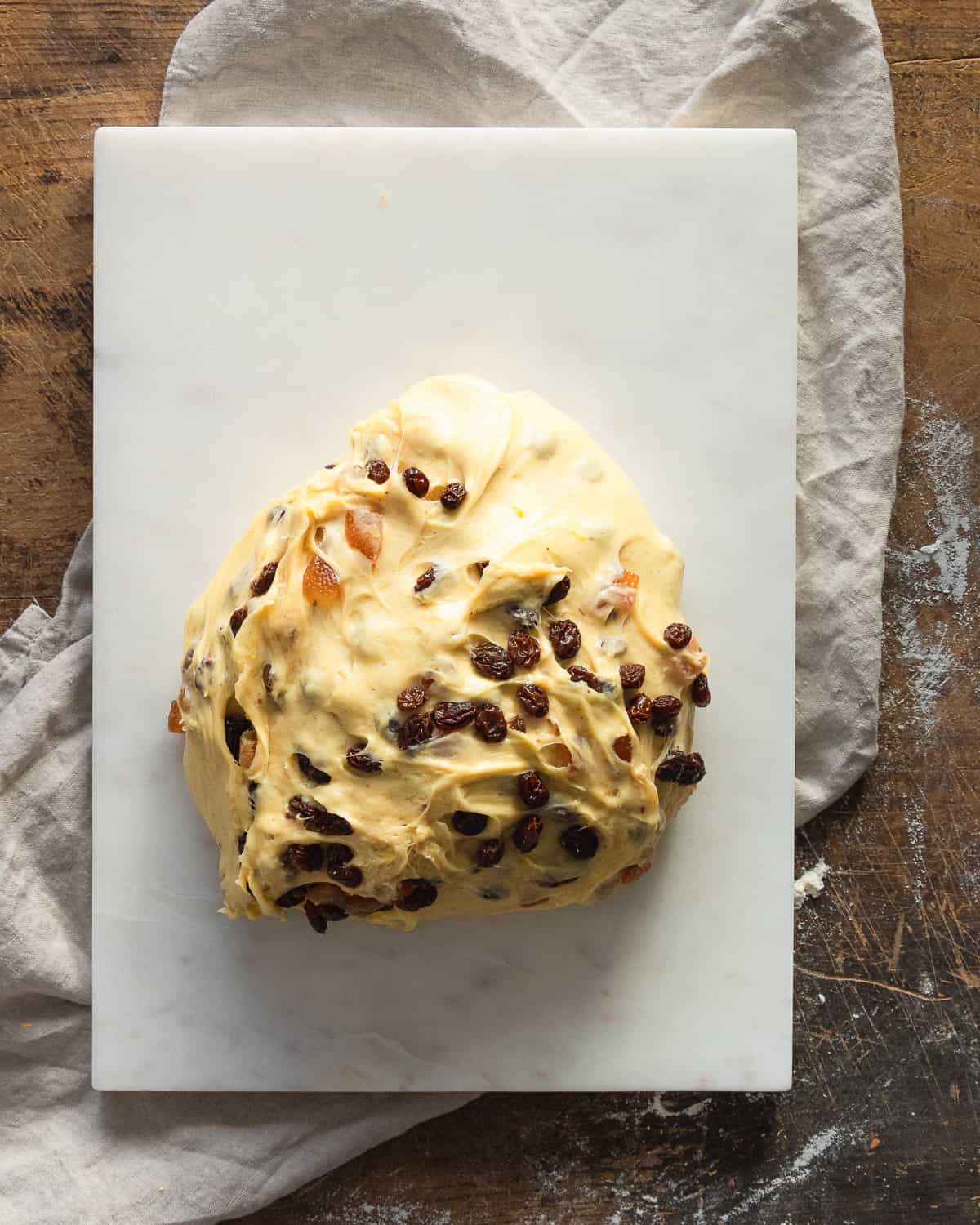
Tips to make a perfect Italian Christmas cake
- Prepare the ingredients- before starting to make the Italian Christmas cake I suggest you prepare all the ingredients, weigh them and arrange them in order of insertion on the working surface.
- Butter- remove the butter from the fridge a fews hours before making the Italian Christmas cake, cut it into equal cubes. The butter should be softened but not melted.
- Develop the gluten- always let the ingredients knead properly and insert the sugar, the yolks, and the butter in small pieces, little by little. Always let the previous ingredients be absorbed properly before adding the following one. In fact, if done correctly, you will see there will no traces of the ingredients left in the bowl, and the dough will be wrapped around the hook.
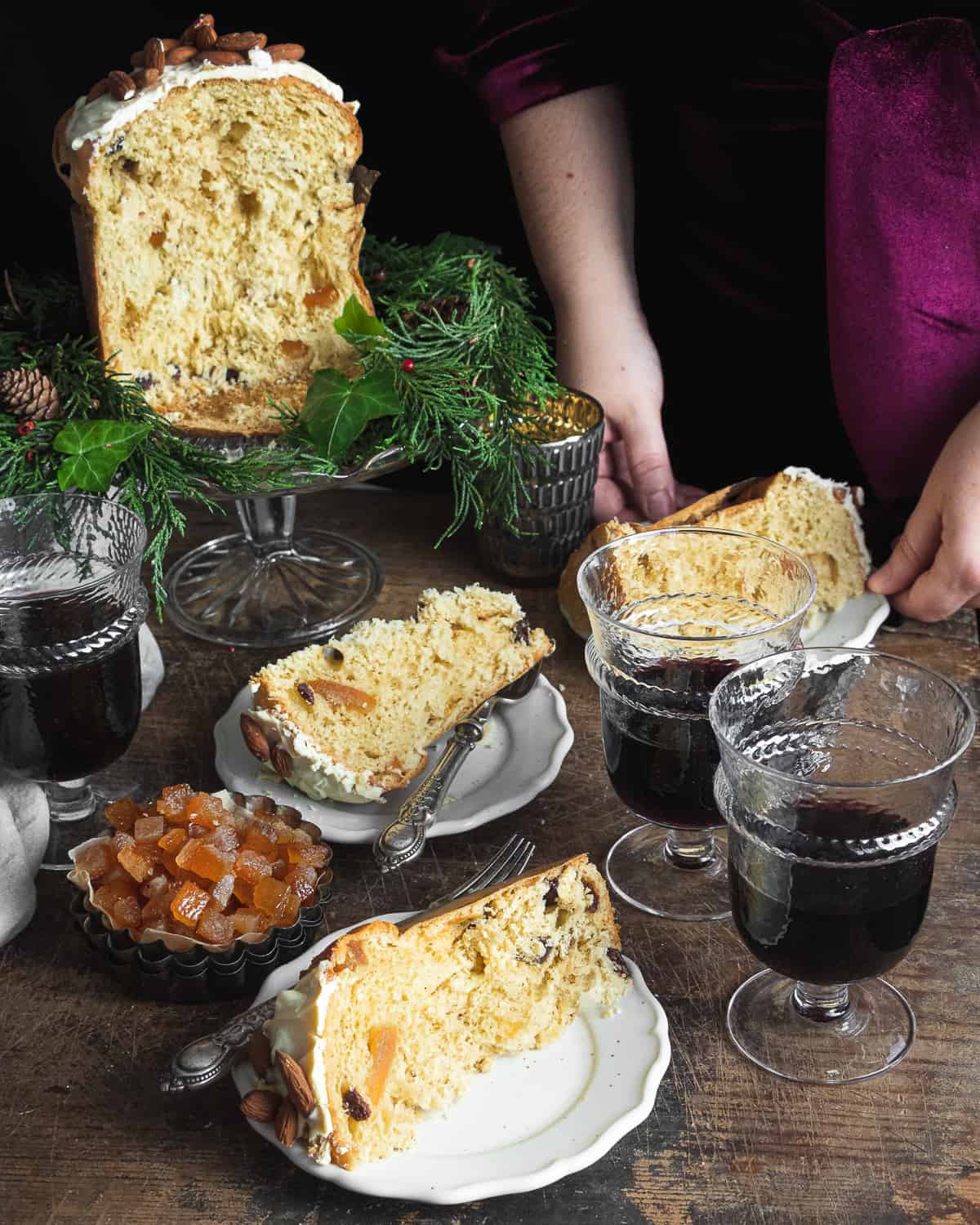
STEP BY STEP INSTRUCTION*
*Note: this is just a quick introduction. Please read the recipe card for the full instructions.
These are my guidelines to make this easy panettone recipe. I don't advise you to make half dose of the Italian Christmas cake as the stand mixer will be not able to knead properly the dough.
The night before prepare the aromatic honey and the hydratate the Sultana raisins
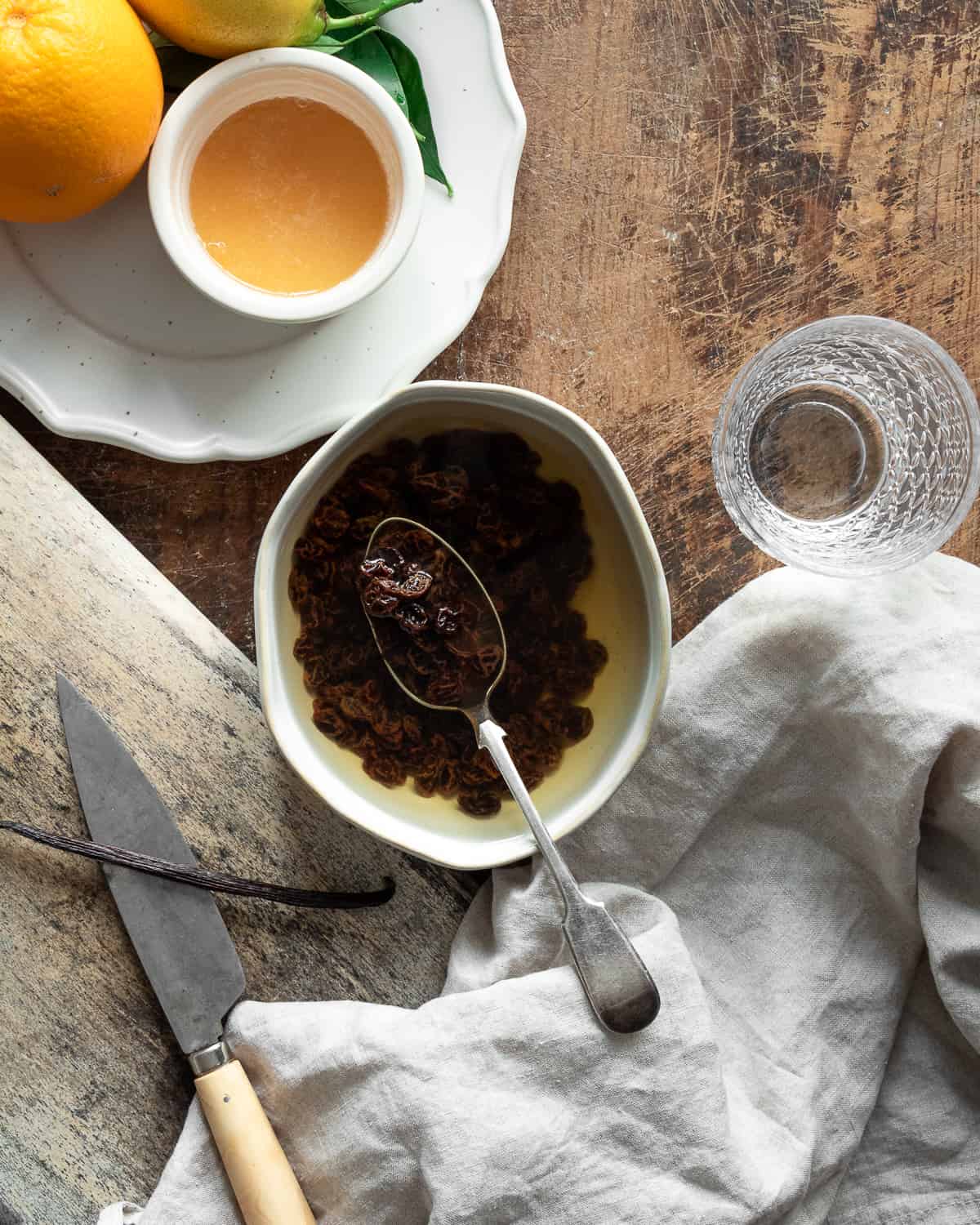
- Rinse the sultana raisins under running water for a few seconds. In a medium bowl place the sultana raisins and pour the rum and the water to cover them. Leave it for 2 hours to soak.
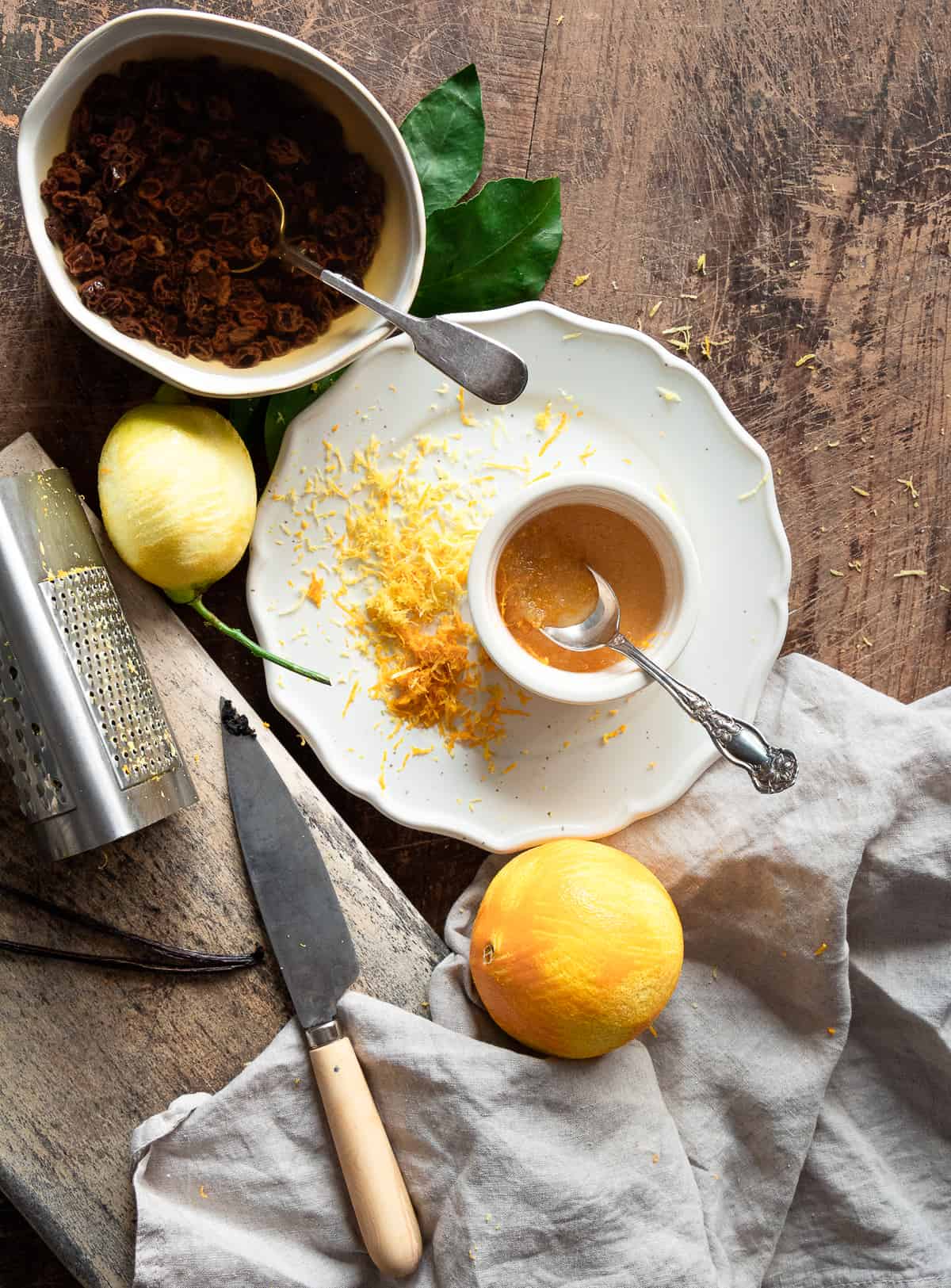
2. In a bowl, combine the honey, the seeds of a vanilla pod, the grated zest of an orange, and pf a lemon. Stir to combine all the aromas with a spoon, then cover the bowl with the cling film and let it rest in the fridge.
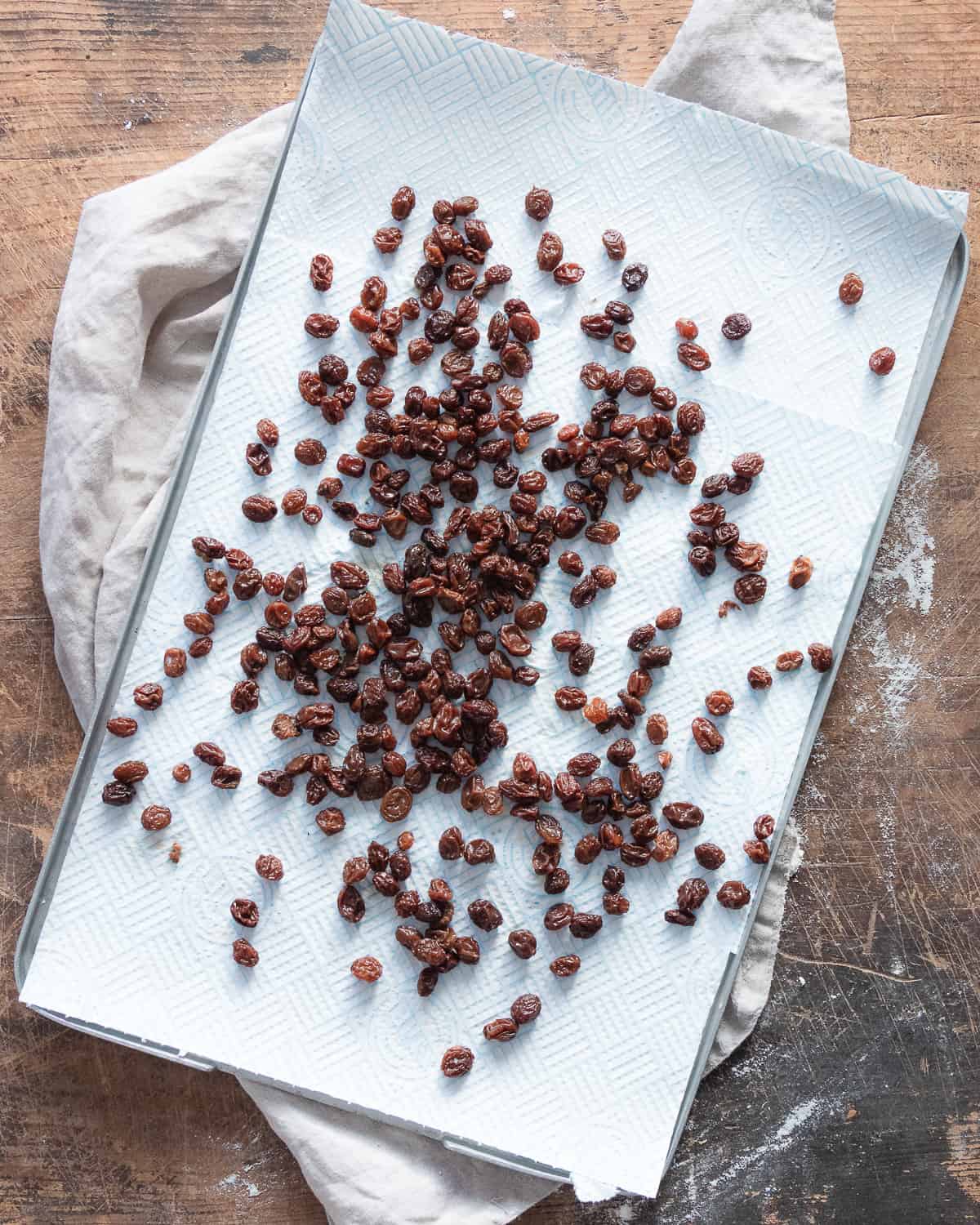
3. Drain the raisins and squeeze them with a kitchen roll sheet. Pour the raisins into a baking dish and cover them with a clean tea towel. Set aside until needed.
The morning make the starter
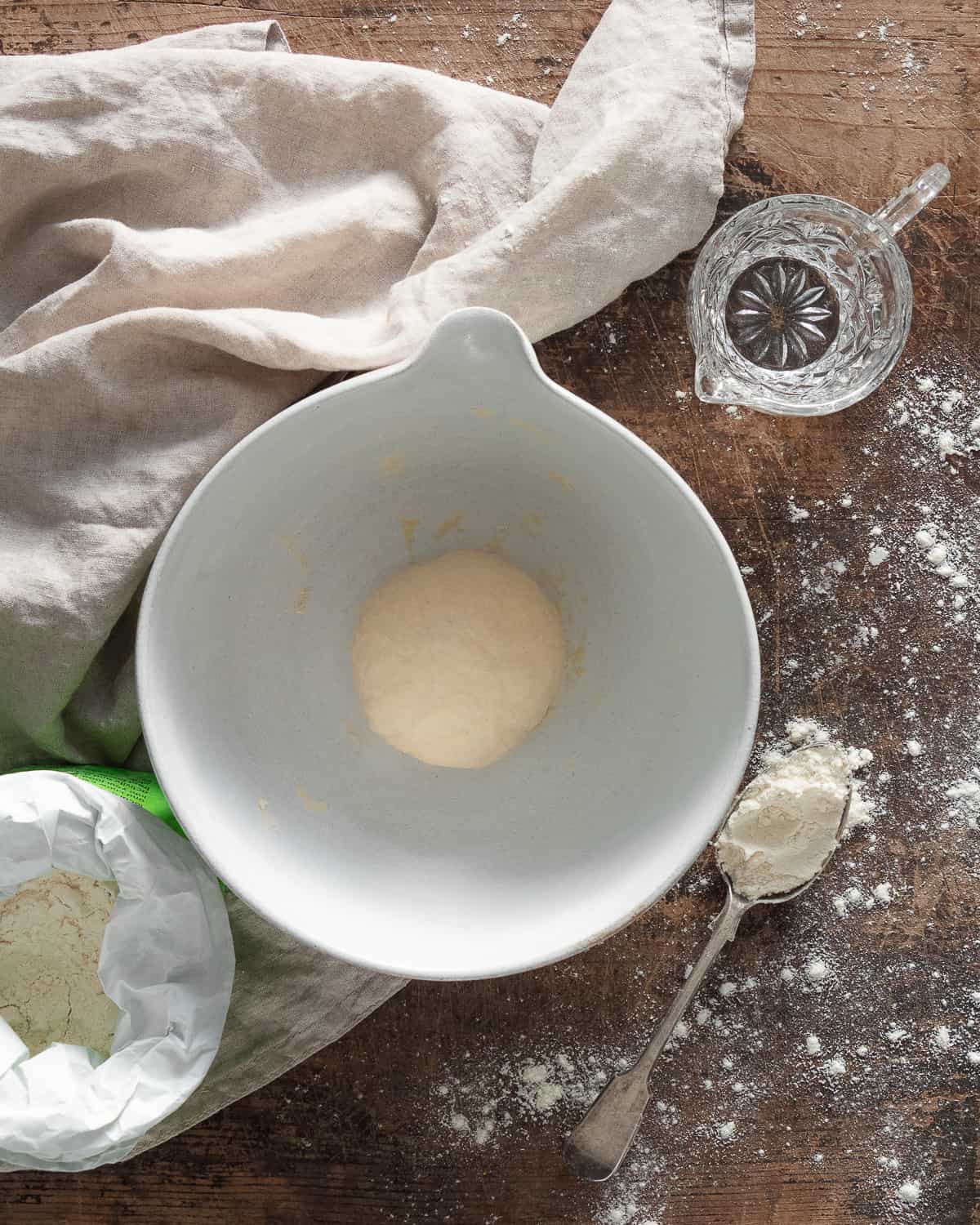
- In a medium bowl, dissolve the yeast with the water. Add the flour and knead until you have a smooth dough. Place the starter in a tall and tight jar and leave it rising in a warm spot until it's doubled in volume*.
*Tip: place a rubber band on the starting level of the starter to see how much it has grown.
Make the dough
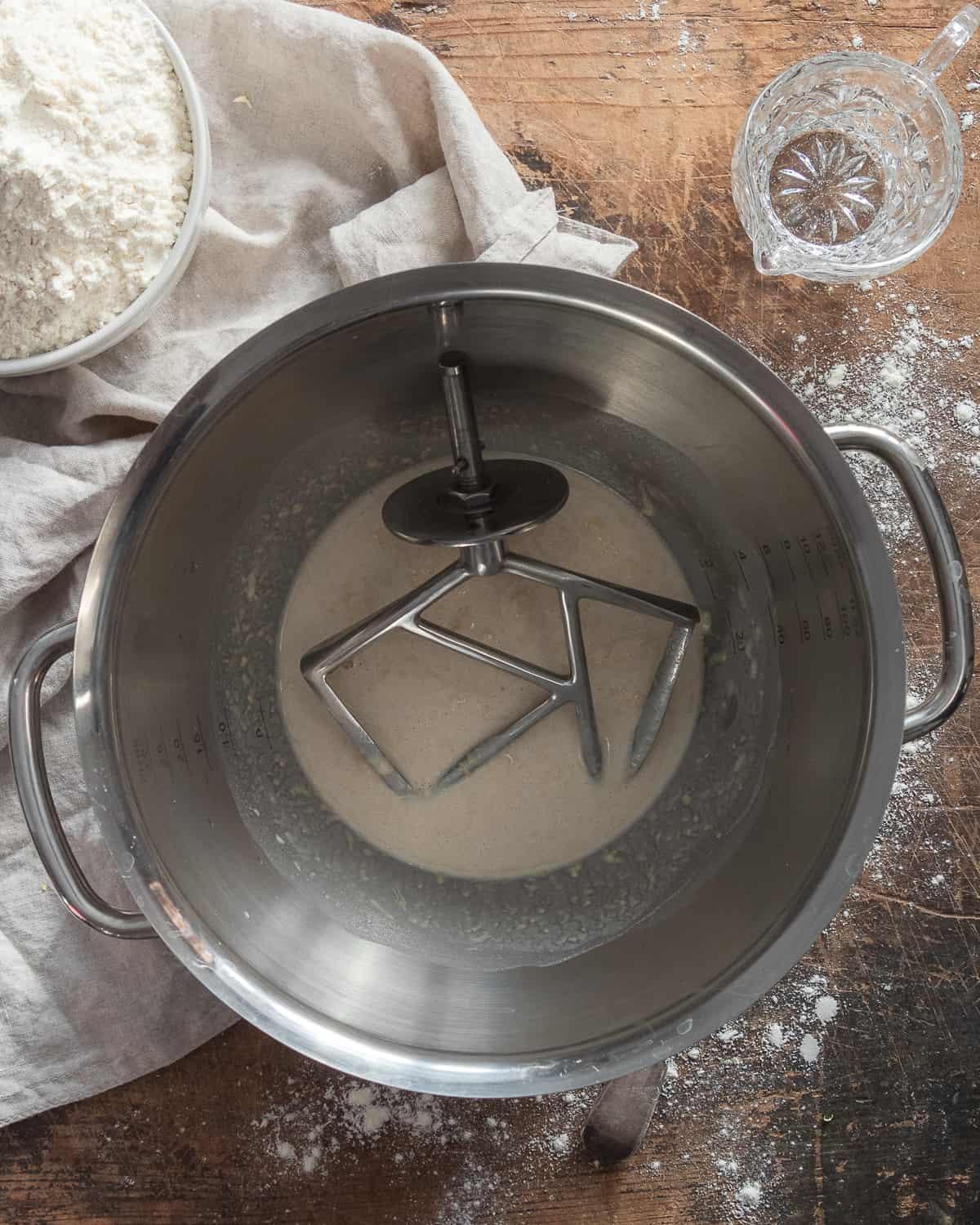
- In a stand mixer, pour the water, the starter broken it into pieces, and the rest of the yeast. Combine the K beater attachment until is all dissolved.
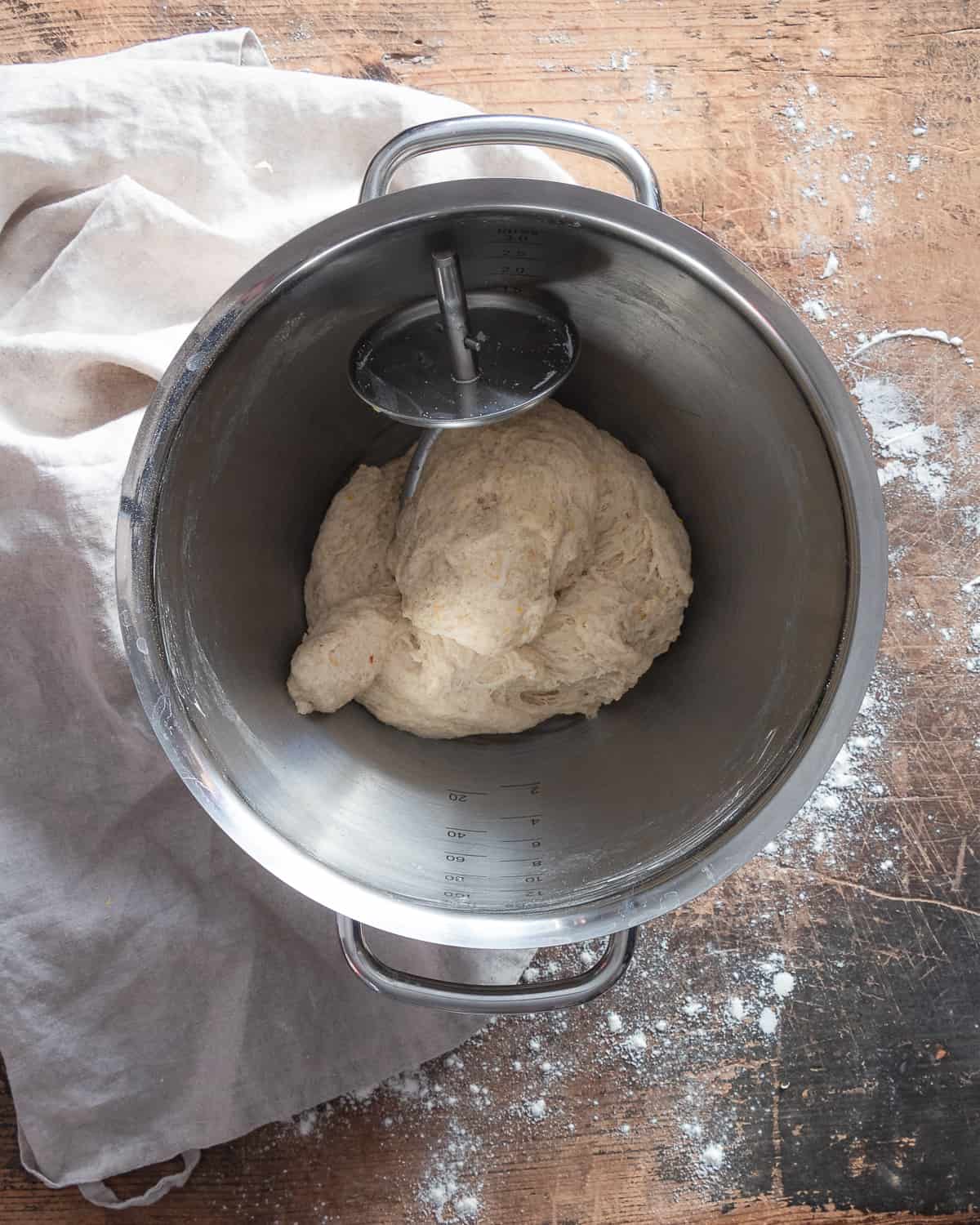
2. Change the attachment from the K beater to the hook, add the flour and knead at 1 speed for 10 minutes. Now add the aromatic honey, the salt, and the sugar one tablespoon* at a time and mix at 1 speed for 13 minutes.
*Tip: let absorbed well the previous ingredients before adding the next ones. It is essential for the creation of gluten. You will notice that the sides of the bowl will be clean and if you touch the dough you will not feel the sugar.
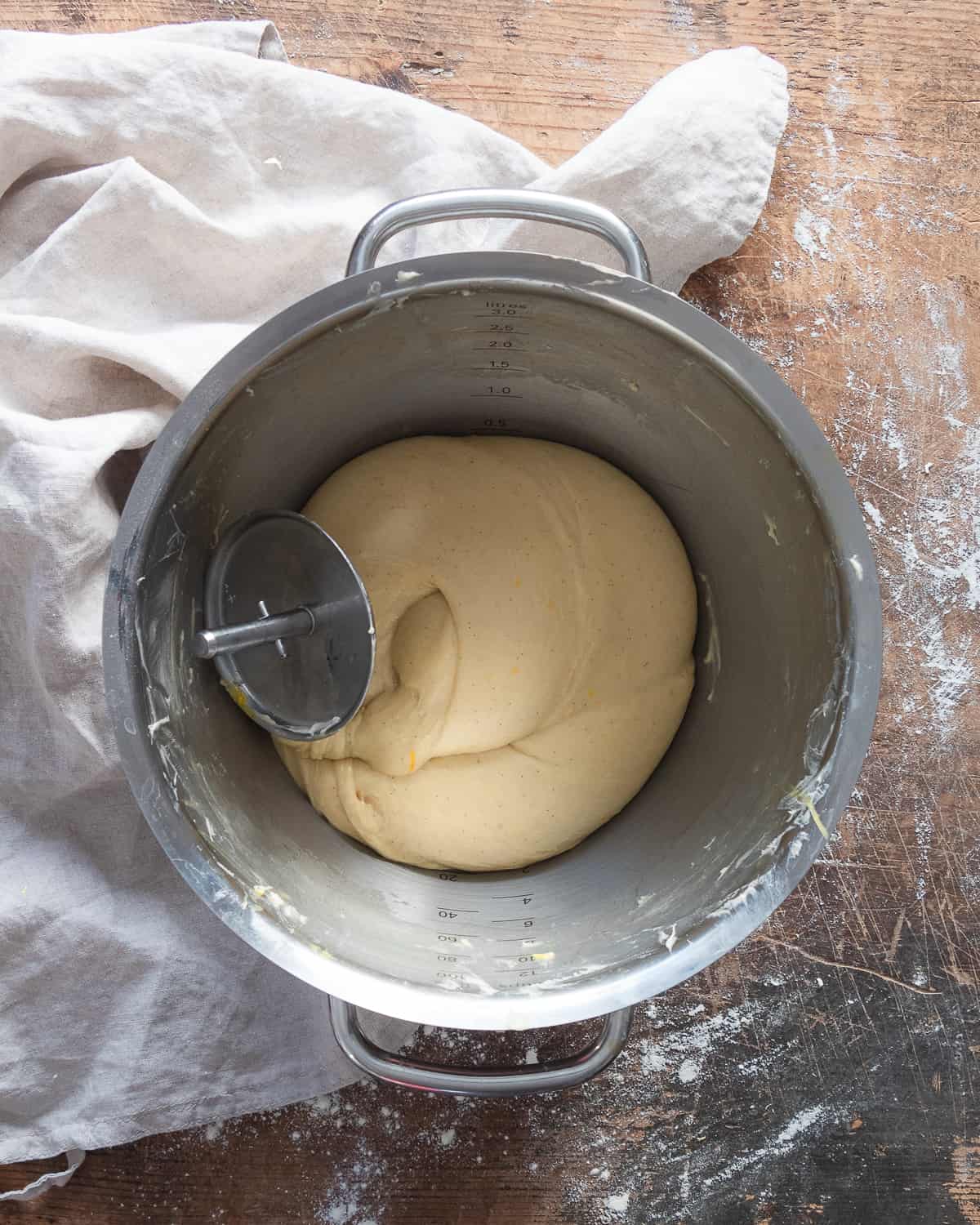
3. Once all the sugar has been absorbed, pour in the dough one egg yolk at a time and mix at 1 speed. Rember to always let the yolk absorb well before adding another one. After 13 minutes the dough has come together, it is time to add the butter.
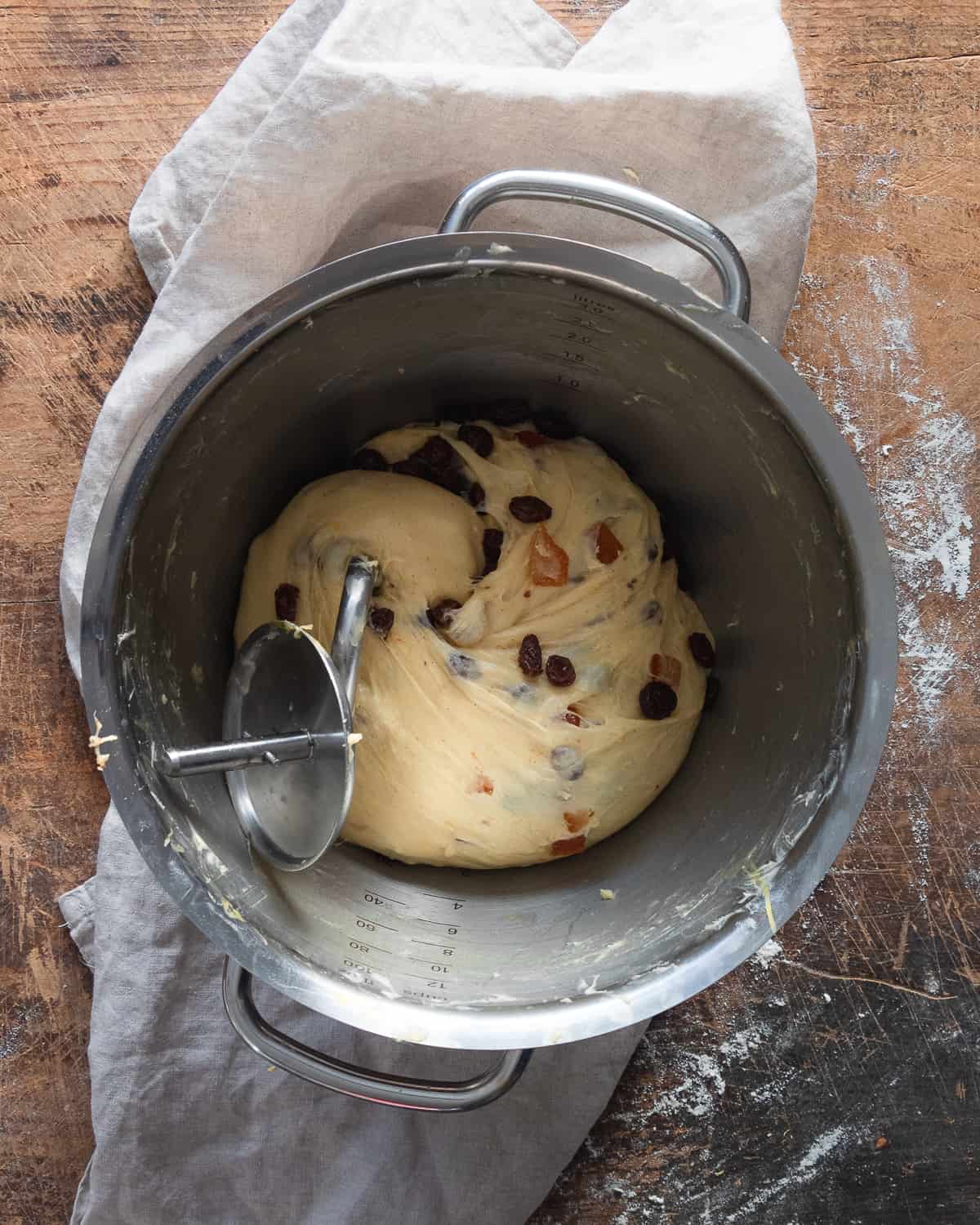
4. Combine the butter little by little and mix at 2 speeds. Again, let the previous butter absorb well before adding a new one. After 20 minutes turn off the stand mixer, you will see that the dough is wrapped around the dough hook*. Now pour the candied oranges and the sultana raisins and turn on again the stand mixer at minimum speed for 10 seconds or so.
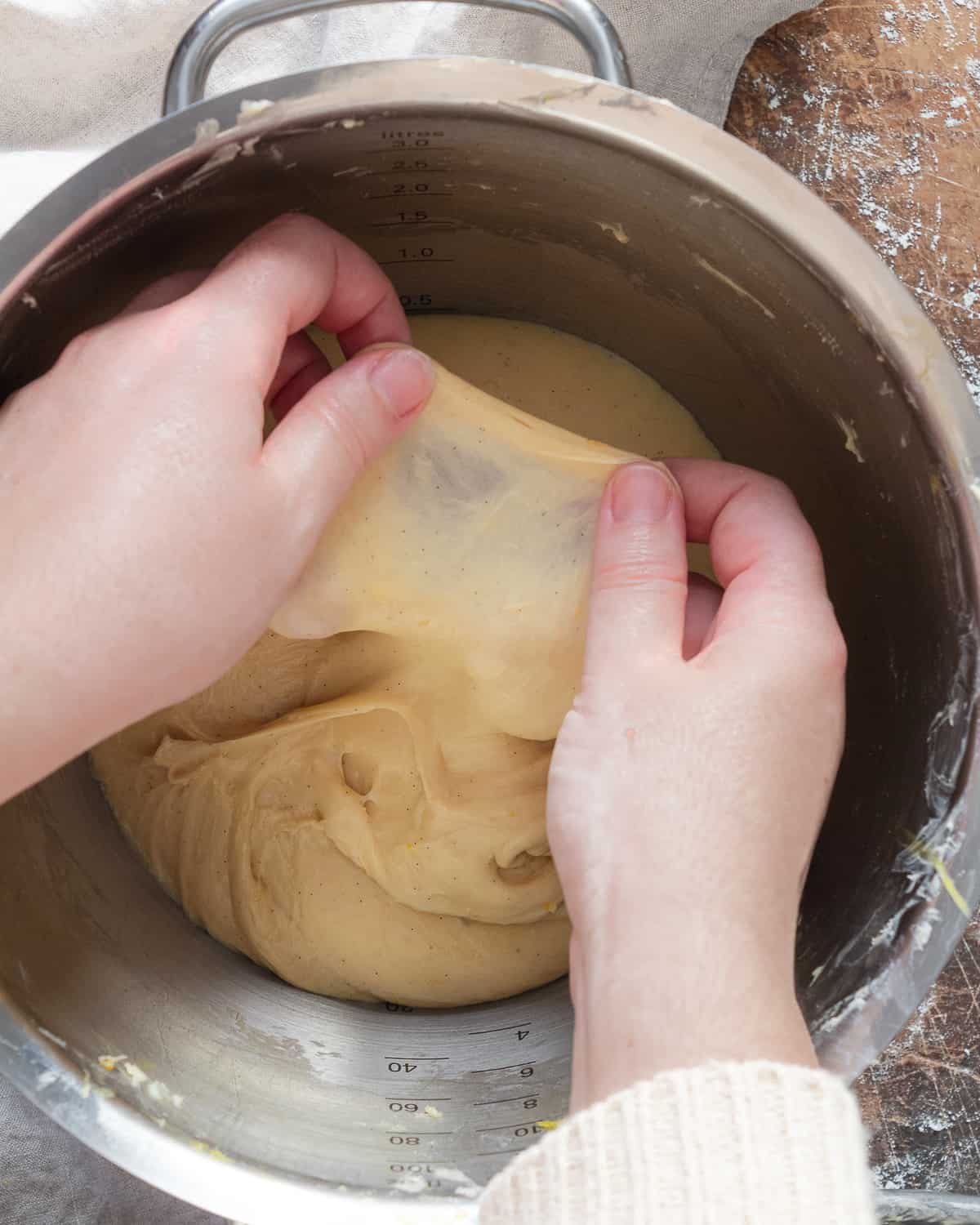
*Note: at this point, the dough must be shiny and elastic, which means that it has developed gluten. You can see this by doing a windowpane test, gently tear off the dough with your fingers and you will be able to see through. If the dough is breaking, knead again for 2 minutes.
Shape and rise
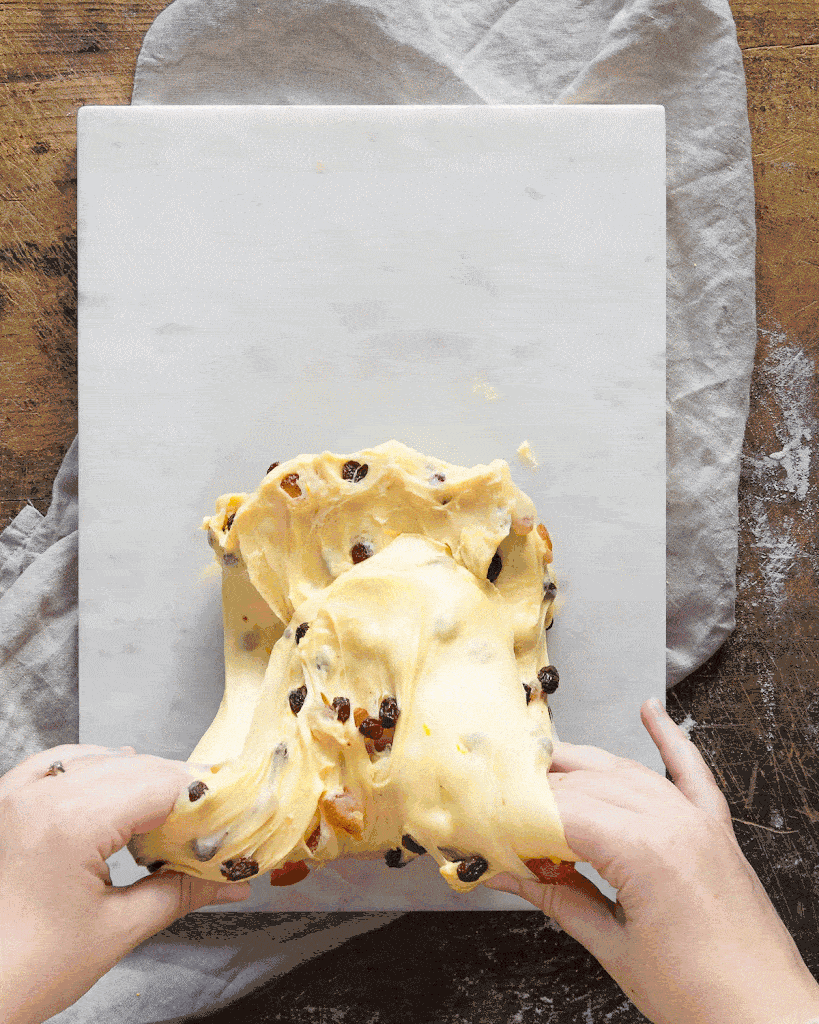
- On the work surface, pour the dough and make two series of slap and fold*. Leave the dough to rest for 30 minutes covered by a cloth. Again, repeat the slap and fold and cover the dough, let it rest for another 30 minutes.
*Note: if some of the fruits are left in the bowl you can add them back to the dough when performing the first slap and fold method.
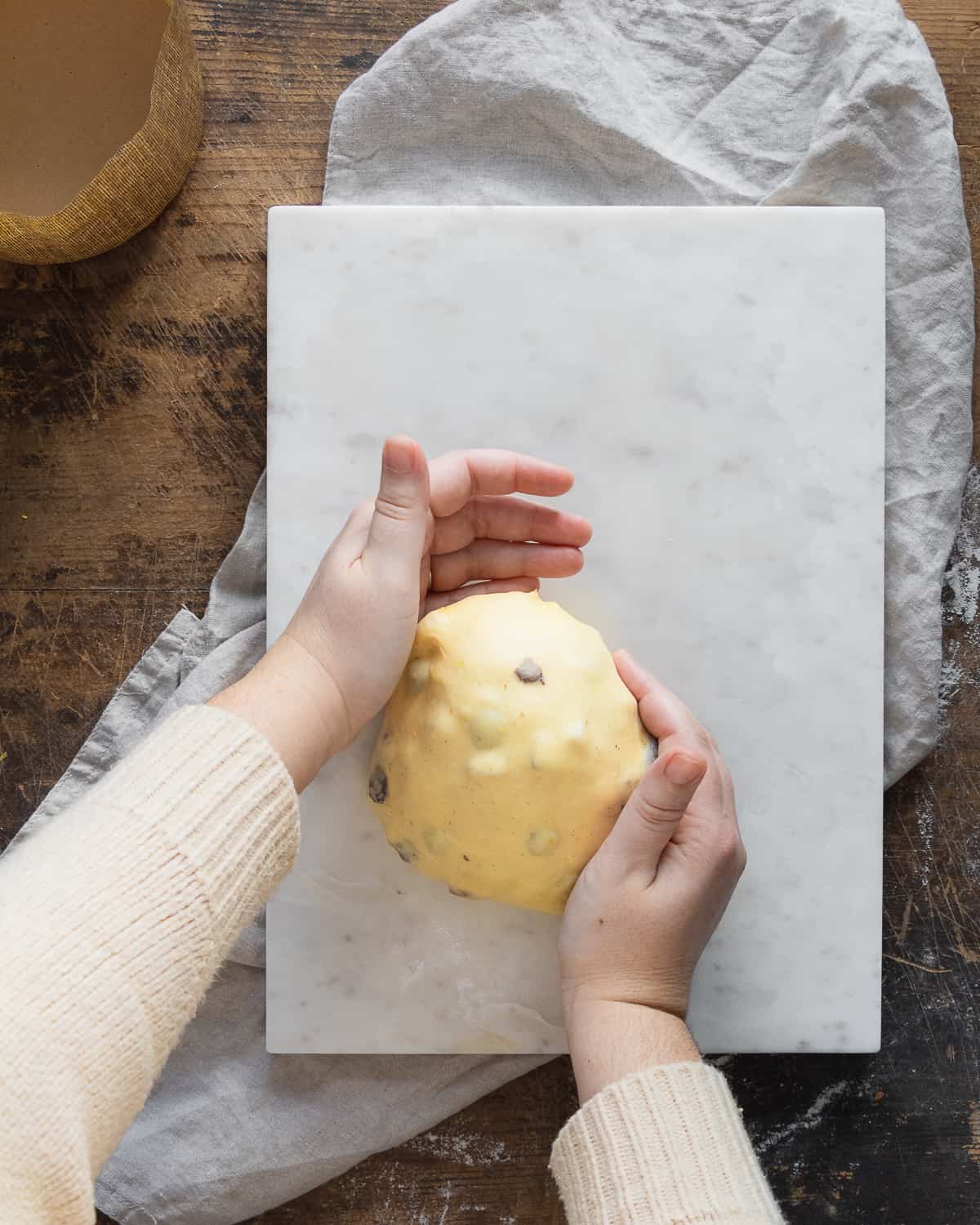
2. It's time to shape the dough, this process is called in Italian "pirlatura". Place a left hand on the dough and just with your right hand push the dough towards you. Now use your left hand while the right hand will be close to the dough and push the dough upwards. Repeat until you have a spherical shape.
3. Place the shaped dough into the panettone cases and let it rise in a warm place* (26/28 °C) until the dough reaches 2 cm from the edge of the cases (about ⅚ hours). The times depend on how constant is the temperature where the dough is resting. Don't rush it, let the dough rise completely.
*Tip: an oven with the light on maybe not be enough. I suggest you place a saucepan filled with hot water in the oven as well as the dough and check the temperature every now and then. Alternatively, turn the oven to 100°C (212°F) for 10 seconds and turn it off immediately. This will warm up slightly in the oven, repeat every now and then.
Cook and rest
- Once the dough has risen, remove the dough from the oven and turn the oven at 150°C (302°F) fans, 160°C (320°F) convection oven, 4 gas mark.
2. Make a cross, slightly shaped, with a razor blade over the panettone and place a small knob of butter. Alternatively, after having drawn a cross on it, be very careful, with the help of the razor blade, engrave the edges of the cross by lifting the surface of the panettone. Place a small knob of butter and close the sided.
3. Once the oven has reached the temperature cook* the Panettone for 60 minutes if you are making one 1kg of panettone. Instead, if you are baking two panettones of 500 gr each let it cook for 45 minutes.
*Note: don't open the oven for the first 40 minutes as it will prevent the panettone to rise. The panettone will be ready when inserting a cooking thermometer inside, will reach 94/96°C. If you don't possess one, just follow the cooking time.
4. Once the panettone is cooked, remove it from the oven. Pierce the panettone with the skewers ⅗ cm from the bottom. Take extra care as they will be piping hot. Now hang the panettone upside down on top of some books, leaving plenty of space underneath for the steam to escape. Leave it to rest upside down for 12 hours.
Store
- Store the panettone in an extra-large clean freezer plastic bag previously sprayed with Ethyl Alcohol 95% for food. Leaving the panettone resting inside the bag for up to 4 days before serving, that will give the panettone time to release all the flavors. However, if you can't wait to have a slice, you can enjoy this Italian Christmas bread as earlier as the panettone is cooled off.
Make white chocolate glaze before to serve (optional)
- Cut the white chocolate bar into equal pieces, and melt in a bain-marie*. Once completely melted, leave it to cool down for 1 minute and add one tablespoon of melted butter. Mix until combined.
*Note: bring the water to simmer in a deep saucepan. When it starts to simmer, put a medium heat-resistant bowl over the saucepan, remember that the water should never touch the bowl, now add the white chocolate.
2. Pour the white chocolate glaze over the panettone and sprinkle some almonds over the top. Serve the panettone.
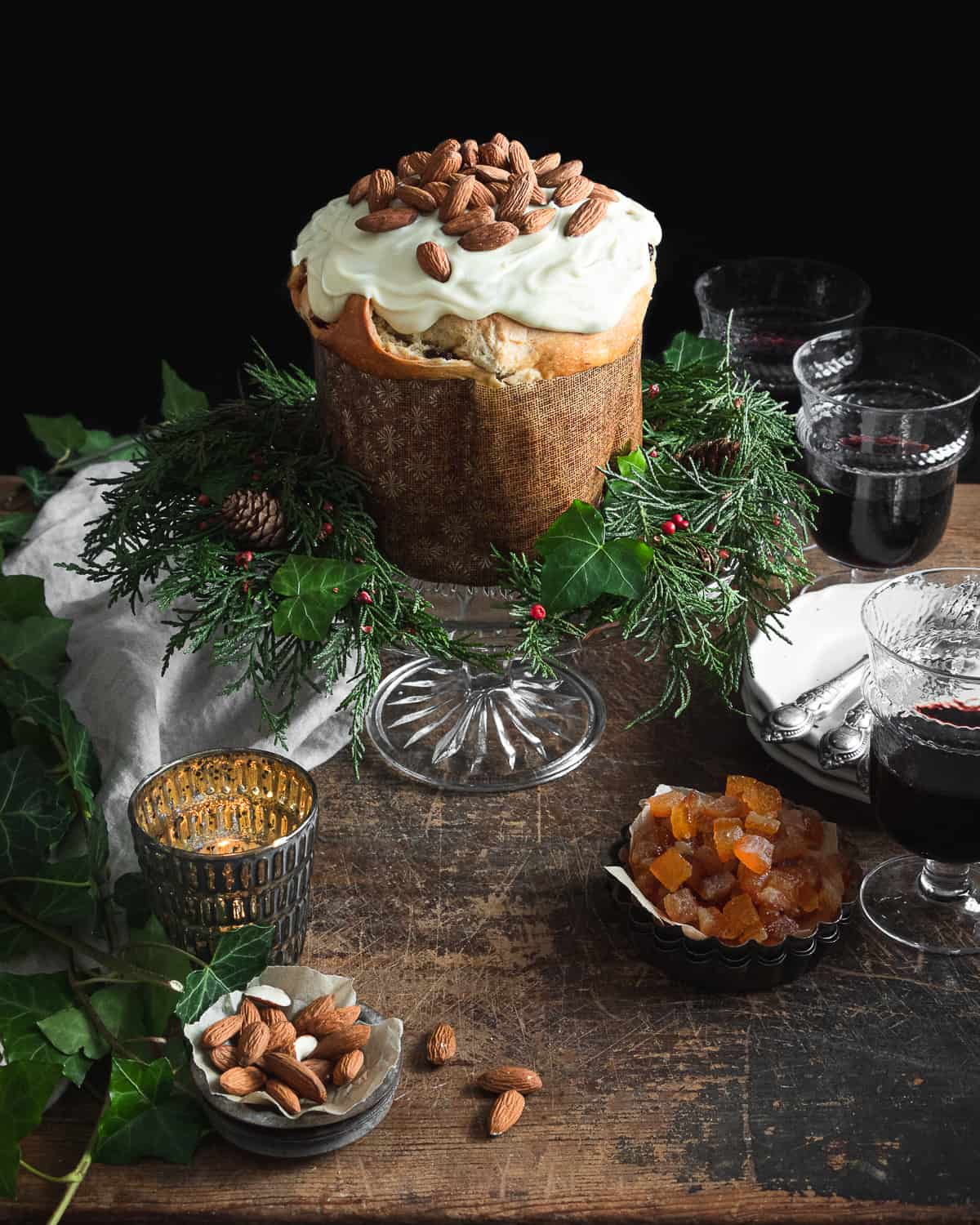
VARIATION/SUGGESTIONS
Here you find some variations to use in your Italian Christmas cake to make it even more special.
Chocolate: If you are not a fun of sultan raisins or candied oranges, you could just use a good quality dark chocolate with 70% of cocoa. I recommend using 140 gr of chocolate cut it 1x1 cm and storing it in the fridge until needed it. The chocolate collects humidity after baking so for this reason we need to use less quantity. If you want to use the chocolate in combination with other fruits, use 90 gr and 210 gr of your favorite fruits. Kids love a chocolaty panettone!!!
Fruits: there are millions of variations to try out. You could use dried apricot, dried figs, dried blueberries, dried cherries, or dried black cherries. They don't need to be soaked in the water, just cut them into pieces and place them into the dough.
Dried nuts: another way to elevate the Panettone is to use dried nuts. Such as pine nuts, hazelnuts, pistachio, or pecans. However, I suggest you use them in combo with other fruits as it can dry out the Panettone.
Glaze: here I have used white chocolate to cover the top of the Italian Christmas bread, but you can skip it and just serve it as its own. If you are a pistachio lover add a few spoons of pistachio spread into the melted white chocolate and sprinkle the top with some chopped pistachio. It will be delicious either way. Another variation would be to use dark chocolate and some chopped almonds or even some peanuts. Delicious!
FREQUENTLY ASKED QUESTIONS
How to store the Italian Christmas bread?
After the panettone has completed 12 hours of rest, store it in an extra-large clean freezer plastic bag previously sprayed with Ethyl Alcohol 95% for food. Leave the panettone to rest inside the bag for up to 4 days before cutting it. This will give the panettone time to release all the flavors. Store the leftover in the same bag for up to 4 days, or alternatively, freeze them in slices into a freezer plastic bag for up to 3 months.
What size are the Panettone cases?
Below are the size of the panettone cases, you need based on the size of the Italian Christmas bread I create.
- 1 kg of Italian Christmas bread- diameter 22 cm for 7 cm height.
- 500 gr of Italian Christmas bread- diameter 17 cm for 5.5 cm height.
Why my dough has not developed gluten?
There are various causes why gluten has not developed. First, the wrong use of flour, the flour should be 15% protein and it should be strong bread flour or Canadian flour. Failure to respect the times of insertion of the ingredients, and kneading for short time. If the flour, water, and the starter have not kneaded enough it will not have the strength to absorb sugar, yolks, and butter.
If you have followed all my instructions and the timing to make the dough you will not run into this problem.
My Italian Christmas cake has not risen yet, why?
The reason why your Christmas cake has not risen is due to the dough that has not developed the gluten or to the non-constant temperature of the area where it is stored. Don't worry if it hasn't risen in ⅚ hours, give it all the time it needs, keep it in a warm place as I suggest, and check the temperature often.
📖 Recipe
Italian Christmas cake
Equipment
- 1 Small bowl
- Spoon
- Grater
- Knife
- Cloth
- 2 Medium bowl
- Ethyl Alcohol 95% for food
- Stand Mixer
- Large freezer bag
- Panettone case
Ingredients
Mixed aroma
- 35 gr honey acacia
- 1 vanilla pod seeds
- 1 zest of all orange unwaxed
- 1 zest of all lemon unwaxed
Sultana raisins
- 130 gr sultana raisins
- 32 gr rum dark
- just enough water room temperature
Starter
- 70 gr water room temperature
- 10 gr yeast fresh
- 120 gr strong bread flour 15% protein
Panettone 1 kg or two of 500 gr
- 145 gr water room temperature
- 7 gr yeast fresh
- 390 gr strong bread flour 15% protein
- 100 gr caster sugar
- 5 gr salt fine
- 85 gr eggs yolks room temperature, around 5
- 200 gr unsalted butter soften and cut it into small squares
- 100 gr candied oranges cut it into 1x1 cm
Instructions
The night before prepare the mixed aroma
- In a bowl, combine the honey, the seeds of a vanilla pod, the grated zest of an orange, and of a lemon. Stir to combine all the aromas with a spoon, then cover the bowl with cling film and let it rest in the fridge. The rest will develop a remarkable citrus flavor, typical of panettone.
- Rinse the sultana raisins under running water for a few seconds. In a medium bowl, place the sultana raisins, pour the rum and the water to cover them. Leave it for 2 hours to soak.
- Drain the raisins and squeeze them with a kitchen roll sheet. Pour the raisins into a baking dish previously covered with some kitchen roll sheet. Now cover them with a clean tea towel and set them aside until needed.
The morning of the next day make the starter
- In a medium bowl, dissolve the yeast with the water. Add the flour and knead until you have a smooth dough.
- Store the starter in a tall and tight jar and place a rubber band on the starting level of the starter to see how much it has grown. Leave it rising in a warm spot until it's doubled in volume, usually in ½ hours. Once it doubles in volume we can start to prepare the dough.
Make the dough
- In a stand mixer, pour the water, the starter broken into pieces, and the rest of the yeast. Combine the K beater attachment until is all dissolved.
- Replace the K beater with the hook attachment.
- Add the flour and knead at 1 speed for 10 minutes with the hook attachment.
- Now add the aromatic honey, the salt, all together, and the sugar one tablespoon at a time and mix at 1 speed for 13 minutes. Let absorb well the previous ingredients before adding another one. This is essential for the creation of gluten. You will notice that the sides of the bowl will be clean and if you touch the dough you will not feel the sugar.
- Once all the sugar has been absorbed, pour in the dough one egg yolk at a time and mix at 1 speed. Remember to always let the yolk absorb well before adding another one. After 13 minutes the dough has come together and you will see that it clings to the hook.
- Combine the butter, by adding 3 cubes at times, mix at 2 speeds. Again, let the previous butter absorb well before adding another one. After 20 minutes turn off the stand mixer, you will see that the dough is wrapped around the dough hook. At this point, the dough must be shiny and elastic, which means that it has developed gluten. You can see this by doing a windowpane test, gently tear off the dough with your fingers and you will be able to see through. If the dough is breaking, knead again for 2 minutes.
- Now pour the candied oranges and the sultana raisins and turn on again the stand mixer at minimum speed for 10 seconds or so. If some of the fruits are left in the bowl you can add them back to the dough when performing the first slap and fold method.
- On the work surface, pour the dough and make two series of slap and fold. Leave the dough to rest for 30 minutes covered by a cloth. Repeat the slap and fold, cover the dough and let it rest for another 30 minutes.
- It's time to shape* the dough, this process is called "pirlatura" in Italian. Place a left hand on the dough and only with your right hand push the dough towards you. Now use your left hand while the right hand will be close to the dough and push the dough upwards. Repeat until you have a spherical shape. At this point*, place the dough very carefully into the panettone case and cover them with some cling film.
- Let it rise in a warm place at 26/28 °C. An oven with the light on maybe not be enough. I suggest you place a saucepan filled with hot water in the oven as well as the dough, and check the temperature every now and then. Alternatively, turn the oven to 100°C (212°F) for 10 seconds and turn it off immediately. This will warm up slightly the oven, repeat every now and then. The dough will be ready when it reaches 2 cm from the edge of the cases (about ⅚ hours). Timings depend on how constant is the temperature where the dough is resting. Don't rush it, let the dough rise completely.
Bake the panettone and hang it
- Once the dough has risen, remove the dough from the oven and turn the oven at 150°C (302°F) fans, 160°C (320°F) convection oven, 4 gas mark. Remove the cling film for the panettone and perform cross with a razor blade very gently, cutting just the skin. Place a small knob of butter. Alternatively, after having drawn a cross on it, be very careful, with the help of the razor blade, engrave the edges of the cross by lifting the surface of the panettone. Place a small knob of butter and close the sides. This during the baking process will donate a wonderful dome typical of the panettone.
- Once the oven has reached the temperature, cook the Panettone for 60 minutes if you are making one 1kg of panettone. Instead, if you are baking two panettones of 500 gr each, let it cook for 45 minutes. Remember, don't open the oven for the first 40 minutes as that will prevent your panettone to raise. The panettone will be ready when inserting a cooking thermometer inside it will reach 94/96°C. If you don't possess one, just follow the cooking time.
- Once the panettone is cooked, remove it from the oven. Pierce, the panettone with the skewers ⅗ cm from the bottom, taking extra case as they will be piping hot. Now hang the panettone upside down on top of some books, leaving plenty of space underneath for the steam to escape. Leave it to rest upside down for 12 hours.
Store
- However, if you can't wait to have a slice, you can enjoy this Italian Christmas bread as earlier as the panettone is cooled off.
Prepare the white chocolate glaze (optional)
- Cut the white chocolate bar into equal pieces, and melt in a bain-marie*. Once completely melted, leave to cool down for 1 minute and add one tablespoon of melted butter. Mix until combined. Pour the white chocolate glaze over the panettone and sprinkle some almonds over the top. Serve the panettone once the glaze dries up or - as I suggest - after ⅔ days resting.
Notes
How to store the Italian Christmas bread?
After the panettone has completed 12 hours of rest, store it in an extra-large clean freezer plastic bag previously sprayed with Ethyl Alcohol 95% for food. Leave the panettone to rest inside the bag for up to 4 days before cutting it. This will give the panettone time to release all the flavors. Store the leftover in the same bag for up to 4 days, or alternatively, freeze them in slices into a freezer plastic bag for up to 3 months.What size are the Panettone cases?
Below are the size of the panettone cases, you need based on the size of the Italian Christmas bread I create.- 1 kg of Italian Christmas bread- diameter 22 cm for 7 cm height.
- 500 gr of Italian Christmas bread- diameter 17 cm for 5.5 cm height.
Why my dough has not developed gluten?
There are various causes why gluten has not developed. First, the wrong use of flour, the flour should be 15% protein and it should be strong bread flour or Canadian flour. Failure to respect the times of insertion of the ingredients, and kneading for short time. If the flour, water, and the starter have not kneaded enough it will not have the strength to absorb sugar, yolks, and butter.If you have followed all my instructions and the timing to make the dough you will not run into this problem.
My Italian Christmas cake has not risen yet, why?
The reason why your Christmas cake has not risen is due to the dough that has not developed the gluten or to the non-constant temperature of the area where it is stored. Don't worry if it hasn't risen in ⅚ hours, give it all the time it needs, keep it in a warm place as I suggest, and check the temperature often.TRIED THIS RECIPE?
Follow me on Instagram and tag me or mention me on your posts or your stories. I will happy to see your beautiful creations. I will see you on Instagram and on Pinterest too!



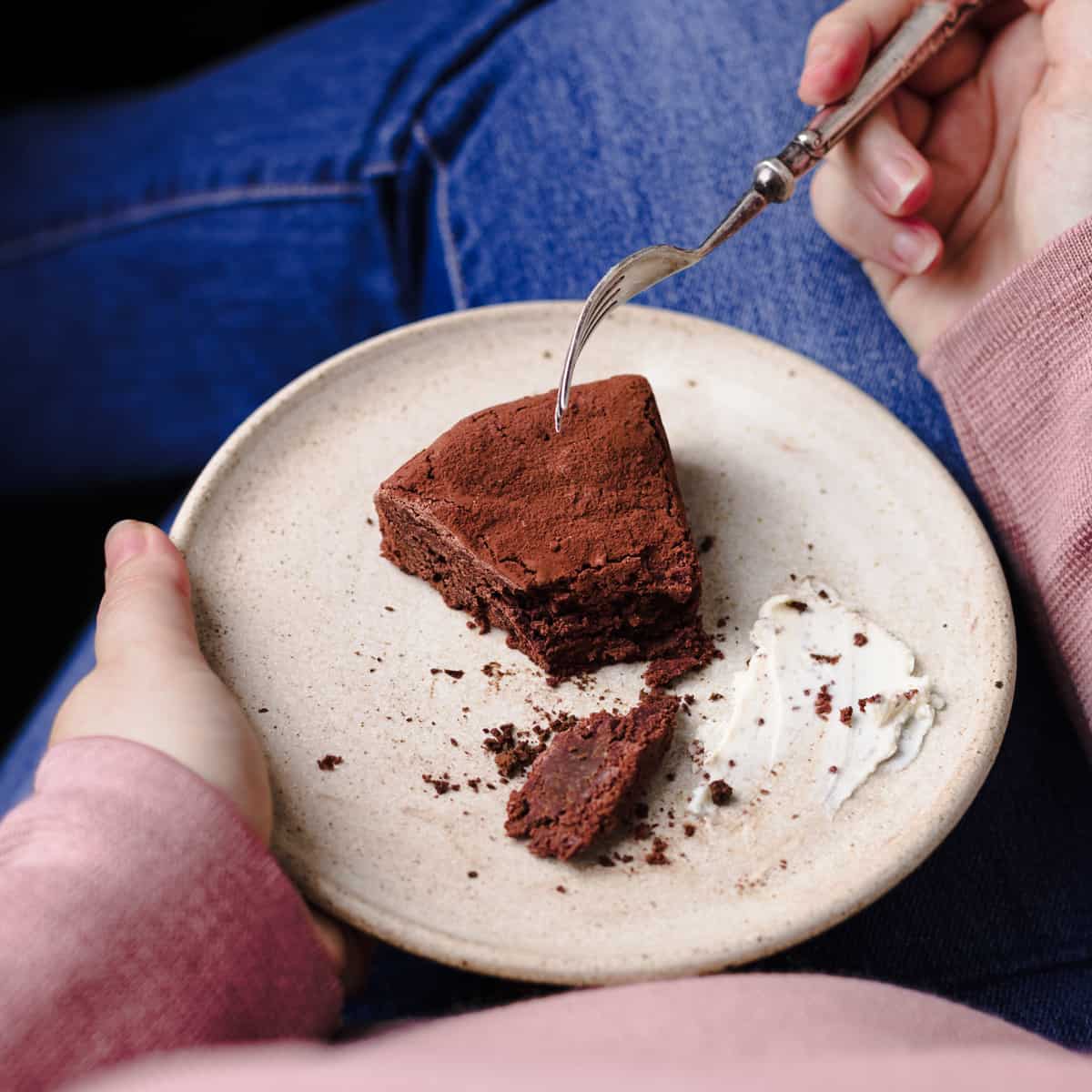
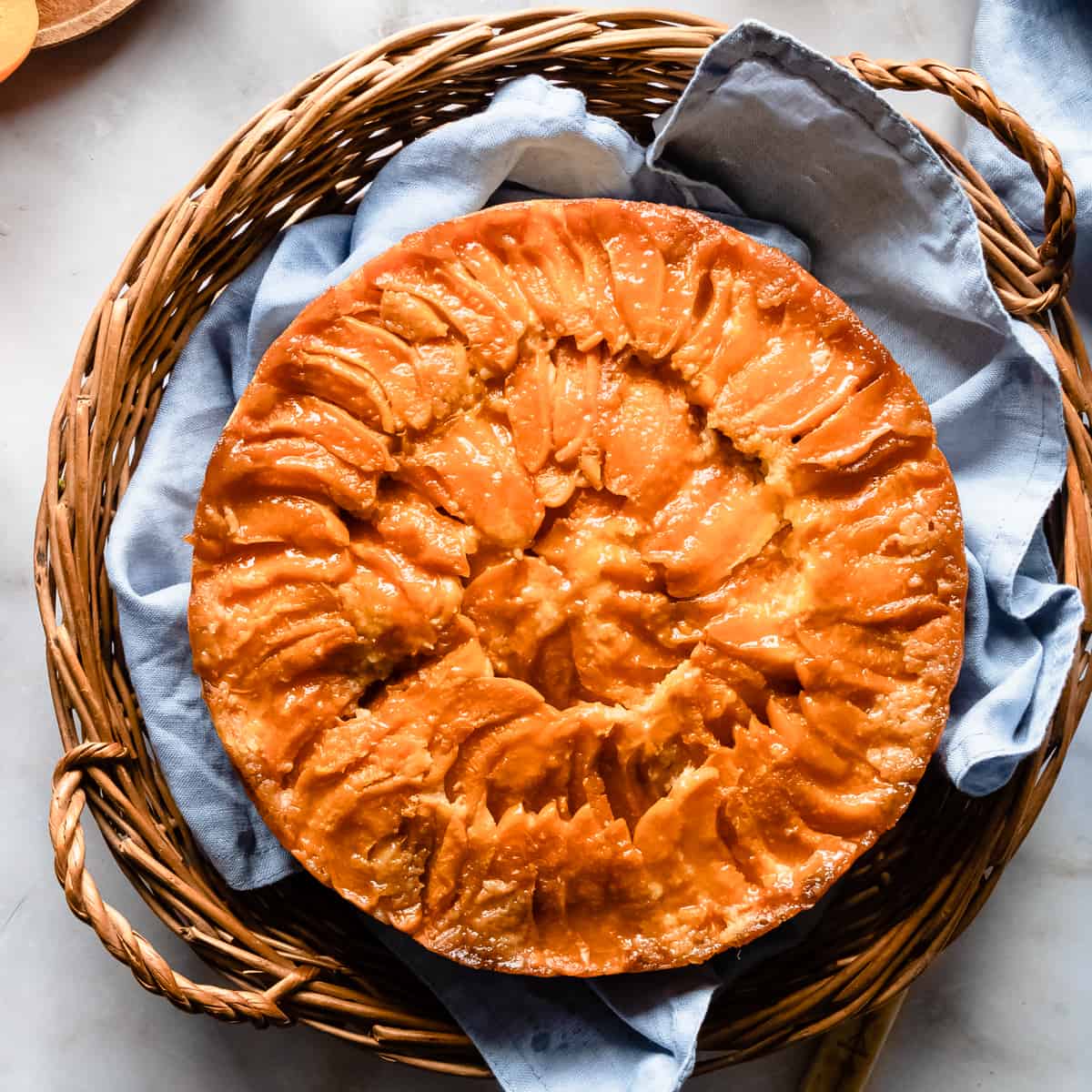
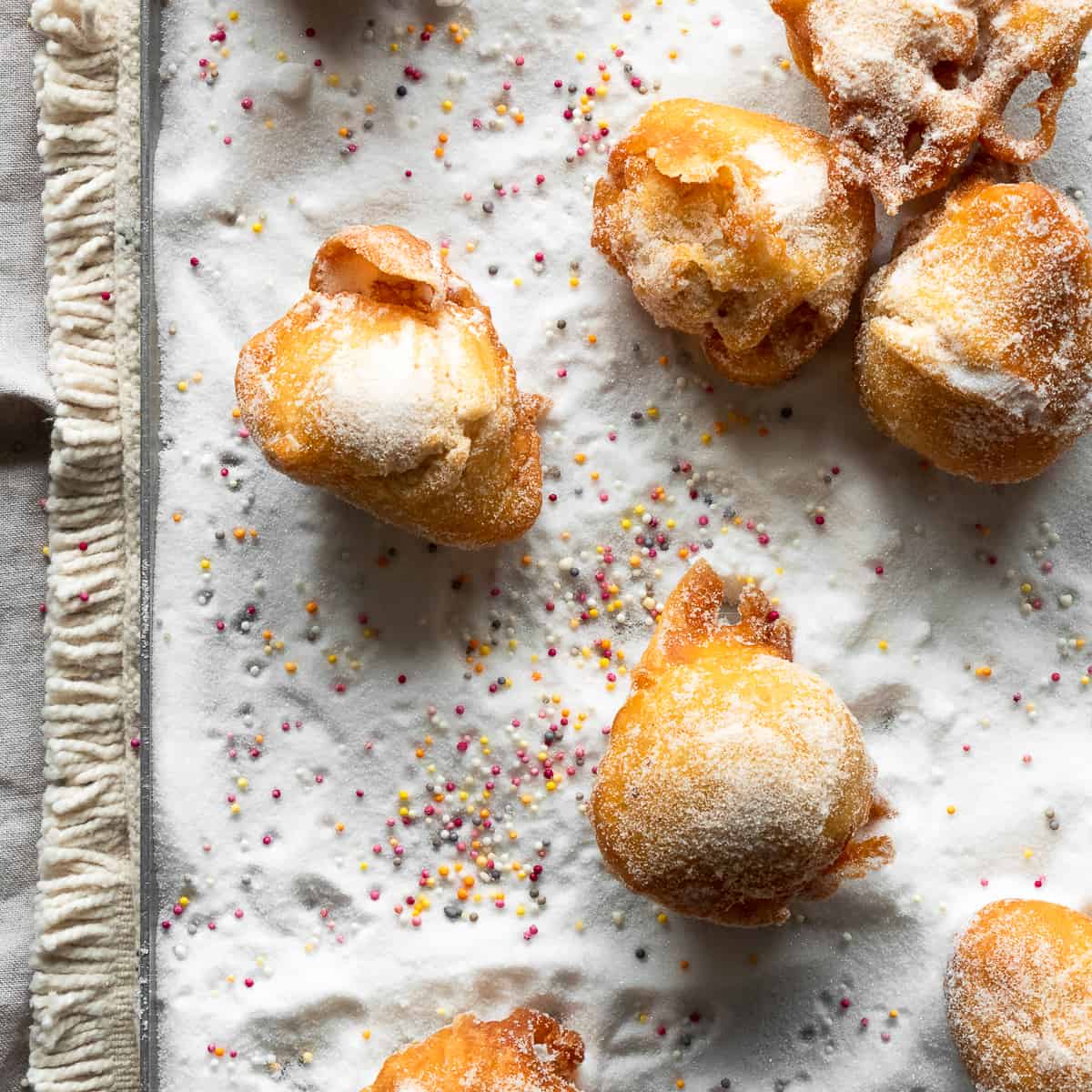
Bianca says
I always wanted to make Panettone! Thank you for this great recipe! It was super easy to prepare thanks to your detailed instructions and the Panettone turned out absolutely delicious
Giangi says
It is a bit early in the season to think of Panettone, however never too early to practice working on holiday treats for friends and family. Loved all your instructions which are easy to follow, even for a nonbaker like me. Definitely will make your Panettone again this winter.
Tressa says
What a great recipe and such easy directions to follow. I can't wait to make this again for the holidays.